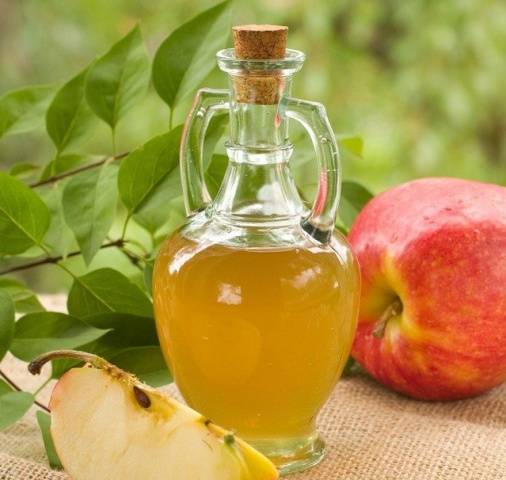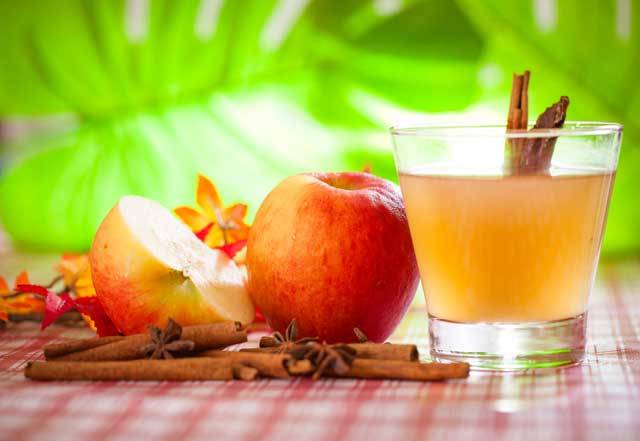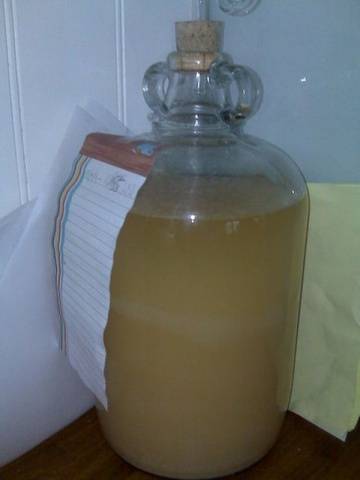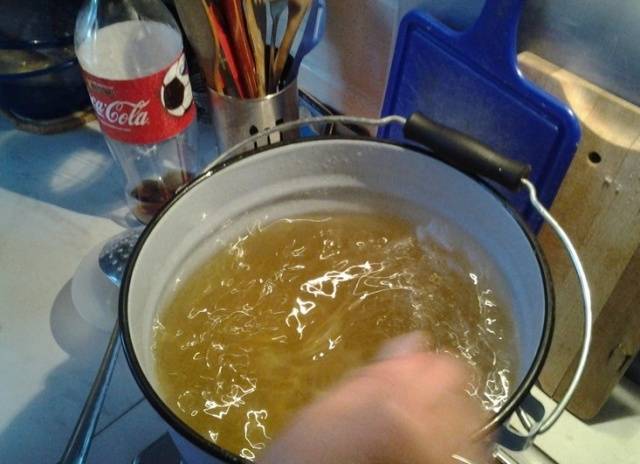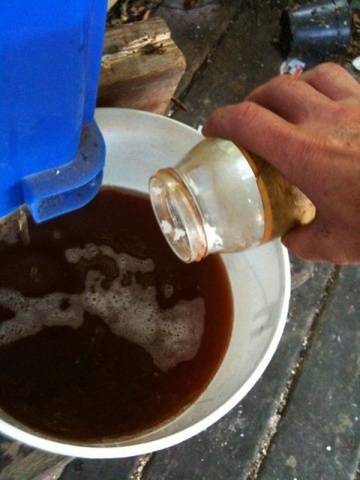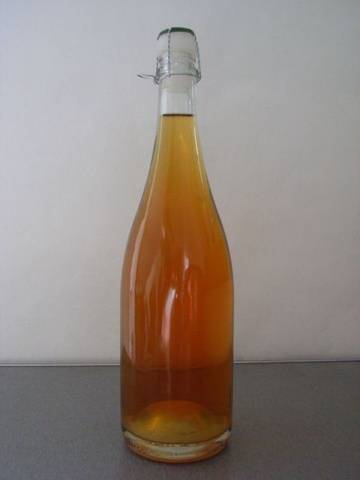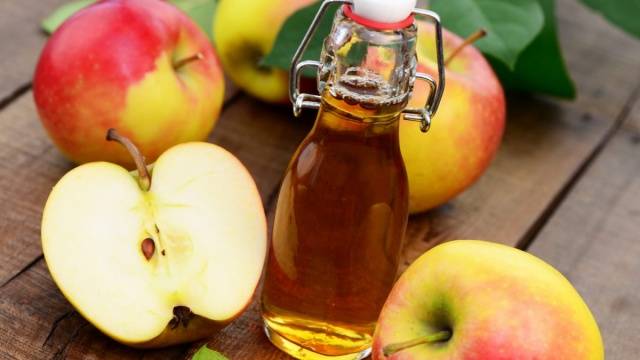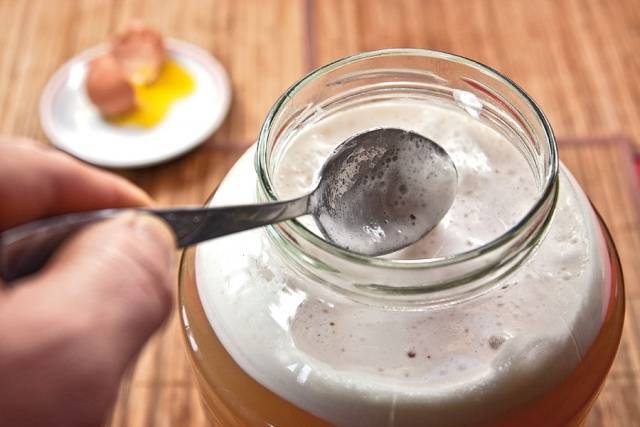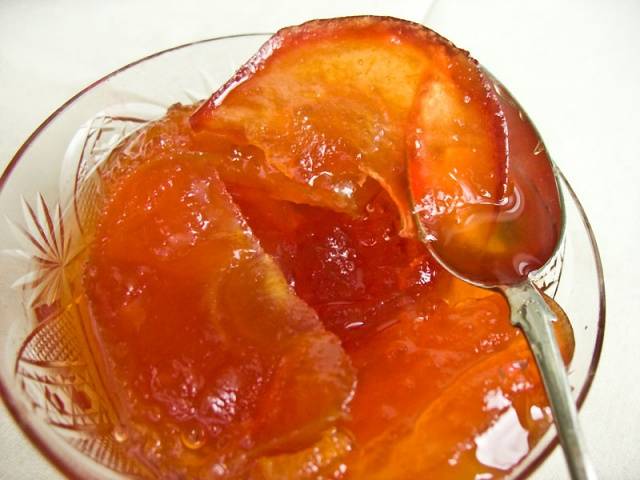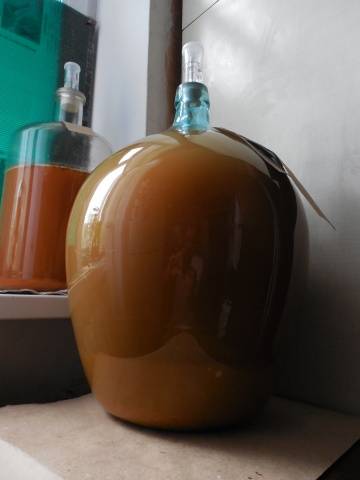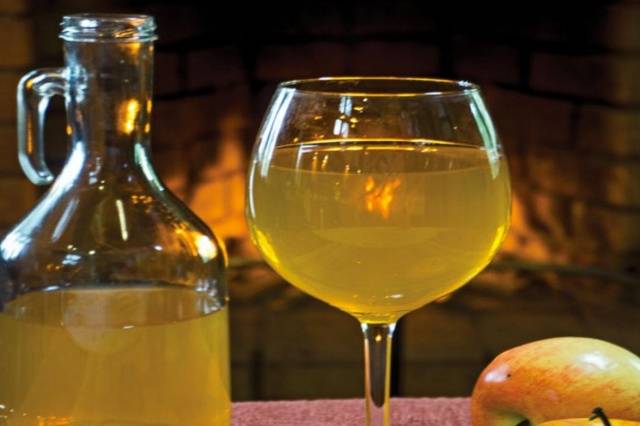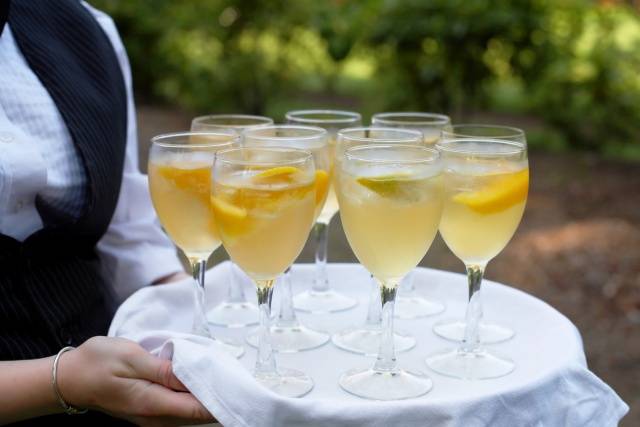Content
Wine made from apples is not as popular as grape or berry wine, but the taste of this drink is universal and is liked by almost everyone. The wine is not very strong (about 10%), transparent, with a beautiful amber shade and a pronounced smell of ripe fruits. There are many recipes for making this light wine: from fortified and table varieties, to liqueur and cider, and there is also wine from apple jam and blends from apples of various varieties or with the addition of other fruits, berries and spices.
This article will be devoted to how to make apple wine at home. Here you can still find a step-by-step recipe for making such a drink with a photo and get acquainted with the detailed technology for making apple wine at home.
How does apple wine making differ from other types of winemaking?
Making apple wine at home is not difficult at all, it is quite within the power of even those who have never been involved in winemaking. The biggest difficulty in the whole process is getting apple juice, because apples are very reluctant to give up their liquid.
It is more convenient and faster to use a juicer, and if there is no such device in the house, you will first have to process the apples in puree, and only then squeeze the juice out of it. You can grind apples with a grater or a meat grinder, and you will have to squeeze the mashed potatoes through cheesecloth (which is very time-consuming and laborious) or use a special press for these purposes.
On the peel of apples, as well as on other fruits and berries for wine, there is wine yeast. Therefore, before making homemade wine, apples are not washed, but only slightly cleaned of dust and soil (if the harvest was harvested under a tree). You can gently scrub the apples with a soft brush or wipe with a dry cloth. For apple wine to ferment well, you should not harvest immediately after the rain - let it pass 2-3 days.
Apples of absolutely any kind are suitable for making wine: dry wines are made from sour fruits, sweet apples are suitable for dessert drinks and liqueur, tart winter varieties will give the drink a special piquancy, and help to create an unusual bouquet.
Apple wine at home: technology
So, in order to make apple wine at home according to the simplest recipe, you must follow the technology. Any deviation from the recipe can be very expensive: in the worst case, the whole wine will turn into a foul-smelling vinegar. For the first experience, it is recommended to choose the simplest apple wine recipe, involving the use of only three components: ripe fruits, water and sugar.
When making any wine, the winemaker must remember how important sterility is in this matter. Therefore, all containers, spoons, shovels and other equipment must be sterilized, and before that they are washed with baking soda.
In winemaking, you cannot use metal utensils, it can only be plastic, glass or enamel containers. It is optimal to choose large containers (10-20 liters), in the worst case, three-liter jars or plastic bottles from under drinking water are suitable for wine.
It is recommended to cut apples peeled from dust into several parts (for convenience) and remove seeds from them, which will give the wine unnecessary bitterness.
How to make apple wine (with photos and explanations for each step)
The technological process of making wine from apples consists of the same steps as in the case of grapes or other fruits and berries:
- Squeezing out juice from apples. The methods of crushing apples have already been discussed above. It should be noted that the task of the winemaker at this stage is to get at least a semi-liquid puree, ideally, it should be pure apple juice.
- Juice settling. The resulting semi-liquid mass or juice must be put in a saucepan or enamel bucket, plastic basin and covered with several layers of gauze. In this form, apples should be for 2-3 days at a temperature of about 22-25 degrees, in addition they need to be protected from sunlight. During this period, the puree should separate into two components: on top there will be a pulp, consisting of the peel and large fractions of apples, and pure apple juice will settle down below. It is in the pulp that wine fungi are found, so the winemaker's task is to mix the apple mass these days, lowering the pulp to the bottom. This should be done every 6-8 hours so that the wine does not turn sour. By the end of the third day, a dense layer of pulp should have formed on the surface of the wine, the wine itself will begin to ferment, emitting a hiss and a sour smell.
- Adding sugar to wine. Initially, apples contain a certain amount of sugars, the percentage depends on the type of fruit and the time of harvest. Therefore, the winemaker must taste the wort: if it is rather sweet, very little sugar is added. An excess of sugar in wine (more than 20%) will stop the fermentation process. It is best to add sugar to wine in portions.starting from the day when the pulp is separated and the wine is poured into the fermentation bottle. 100-150 g of sugar for each liter is simply poured into the wort and stirred thoroughly. After 4-5 days, you can add a second, half as much sugar, and after another week pour the last part into the wine. They do it this way: an amount of wine is poured into a clean container, which is half the volume of sugar (a glass of wine for 0.5 kg of sugar, for example), sugar is added and stirred, then the syrup is poured into a bottle of wine. It is necessary to control the sugar level in apple wine throughout the entire fermentation process.
- Wort fermentation. In order for the wine to ferment well, in addition to yeast and a sufficient percentage of sugar, it needs complete tightness. During fermentation, carbon dioxide is actively released, it must be removed from the bottle in a timely manner, but oxygen from the air, on the contrary, should not get into the wine. A simple device, a water seal, does an excellent job with this task. This can be a store-bought lid, a medical glove with a hole, or a flexible tube, the end of which is dipped into a container of water. The bottle is filled with wine no more than 75% so that there is room for foam and gas, which are necessarily released during the fermentation of apples. Now the bottle needs to be placed in a warm and dark place, with a constant temperature of 20-27 degrees - fermentation will begin in a couple of hours. This process will last from 30 to 60 days, you can find out about the end of wine fermentation by a deflated glove or the absence of bubbles in the water seal.
- Maturation of young wine. Fermented apple wine, in principle, is already drinkable, but it has a pungent smell and not a very pleasant taste. All this can be improved during the maturation of homemade apple wine. At this stage of preparation, the wine is poured from the lees using a plastic tube into a new clean container. Now the apple wine needs to be tasted and, if necessary, sweetened or fixed with vodka or alcohol. The bottle is filled with wine to the top and taken to a cellar or other cool place, where it will mature for 3-6 months.Every 12-20 days you need to inspect apple wine, if a sediment appears, the drink is poured into a new container. You need to drain the apple wine from the lees until it becomes clear.
It remains to pour the finished wine from apples into bottles, and send it to storage in a cool and dark place. Bottles need to be filled to the top so that the contact of the wine with oxygen is minimal.
To make apple wine at home, according to this simple recipe, you need to take about 20 kg of ripe apples and from 150 to 300 g of sugar for each liter of juice obtained.
How to make apple cider (with photo)
It is customary to call cider an effervescent, very light apple wine. The strength of such a drink is usually 5-7%, the taste of the wine is very pleasant, reminiscent of sweet soda.
You will need the following ingredients:
- 8 kg of apples;
- 12 liters of water;
- 3200 g of sugar.
You need to prepare wine like this:
- The harvested apples must be cut into 4-6 pieces (depending on the size of the fruit) and cored. To make the process go faster, you can use a special device - an apple cutter.
- Sliced apple slices are folded into a bag made of dense natural fabric or simply wrapped in a piece of suitable material. This bundle is placed on the bottom of a saucepan or basin, a lid or a wooden disc is placed on top, the size of which should be less than the diameter of the container itself. This entire structure must be pressed with a load weighing about 10 kg.
- From 6 liters of water and 1600 grams of sugar, you need to cook syrup. When the syrup has cooled to room temperature, apples laid under the press are poured into it. The tissue of the bag must be completely in the liquid.
- For five weeks, the container with apples must be kept in a dark and cool room (no more than 18-20 degrees). After this time, the liquid from the pan must be drained using a flexible tube (for example, from a medical dropper). The wine is placed in a clean bottle, syrup is added to it, boiled in the same proportions as the first time.
- The pot with apple slices is kept in the same room for another five weeks. After this time, pour off the second portion of wine. This wine is mixed with the previous one and sent to the cellar for aging.
- After six months, you need to drain the apple wine from the lees and pour it into sterile bottles. For another month, the cider is kept in the cold, after which it can be drunk.
How to make wine from jam at home (with photo)
Each hostess has a jar in the basement old jam, which no one eats, since a new one has been brewed for a long time. Such preserves or marmalades can be a great base for making homemade wine.
So, for a delicious homemade wine you will need:
- a liter jar of apple jam;
- litere of water;
- 100 g unwashed raisins;
- 10-100 g of sugar for each liter of wort (sugar is added only if the jam is not sweet enough).
Making wine from jam is very simple:
- Prepare a three-liter bottle by cleaning it with baking soda and then washing it with boiled water. To consolidate the effect, you can sterilize the jar with steam or in another way.
- Pour apple jam into a clean jar, pour water, put raisins, add sugar if necessary. Mix all ingredients well.
- Cover the bottle with gauze to protect it from insects and place in a warm place (about 22-25 degrees).Here the apple jam should start fermenting within the first 8-20 hours. And the bottle will stand warm for 5 days, during which the contents must be stirred every 8 hours.
- On the sixth day, the pulp (particles that floated to the surface) is taken from the jar with a spoon, and the juice is filtered through several layers of gauze. The filtered wine is poured into a clean bottle, filling it to 3/4 of its volume. From above, the jar is closed with a glove or a special water seal.
- Apple wine will ferment for 30-60 days. All this time, it should be in a warm and dark place with a constant temperature. The end of fermentation is indicated by a deflated glove or lack of air in the water seal. If by the fiftieth day the apple wine is still fermenting, you need to drain it from the sediment so that bitterness does not appear.
- When fermentation is complete, the apple wine is poured into another vessel, being careful not to touch the sediment. If necessary, sugar and alcohol are added to make a fortified sweet wine.
- The wine is removed to the cellar and the sediment is monitored. When the sediment layer reaches several centimeters, the wine is poured. The procedure is repeated until the drink brightens and the precipitate stops falling out.
All that remains is to choose a suitable apple wine recipe and make sure that home winemaking is a simple and very exciting process. The video will tell you in detail about all the stages of making this drink:

